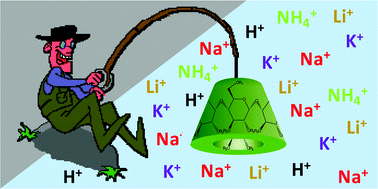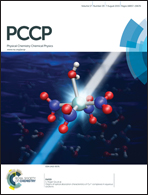Probing the common alkali metal affinity of native and variously methylated β-cyclodextrins by combining electrospray-tandem mass spectrometry and molecular modeling†
Abstract
In the study herein, we investigated the solution and gas phase affinity of native and variously methylated β-cyclodextrins (CDs) as hosts towards three common alkali metals as guests namely lithium, sodium and potassium. For this purpose, two complementary approaches have been employed: electrospray-tandem mass spectrometry (ESI-MS/MS) with two energetic regimes: Collision Induced Dissociation (CID) and Higher Collision Dissociation (HCD), respectively, and DFT molecular modeling. These approaches have been achieved by taking into account the interaction of either one or two alkali metals with the host molecules. The results showed a good agreement between experimental and theoretical data. It was demonstrated that increasing the methylation degree strengthened the gas phase affinity towards all studied alkali metals. Furthermore, it was established that the cation selectivity was Na+ > Li+ > K+ and Li+ > Na+ > K+ for the solution and gas phase, respectively.


 Please wait while we load your content...
Please wait while we load your content...